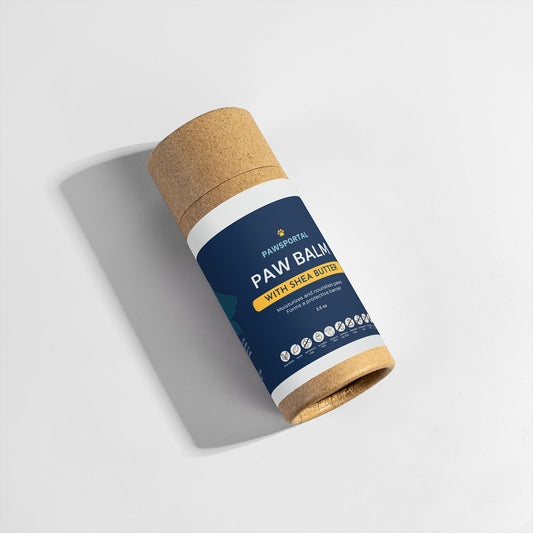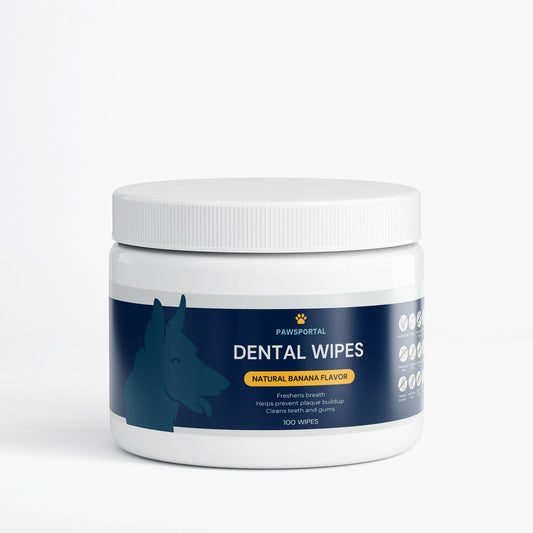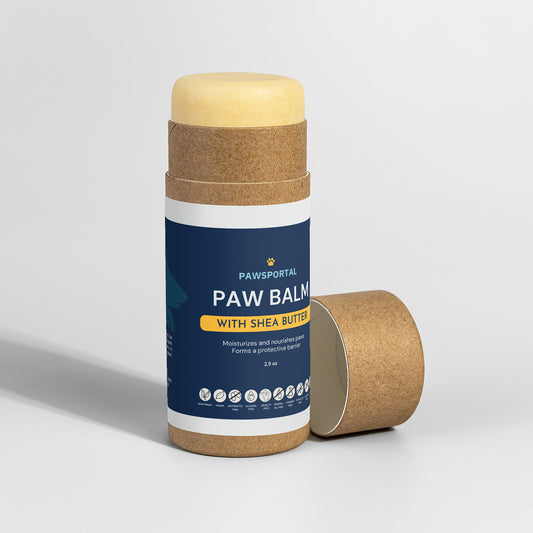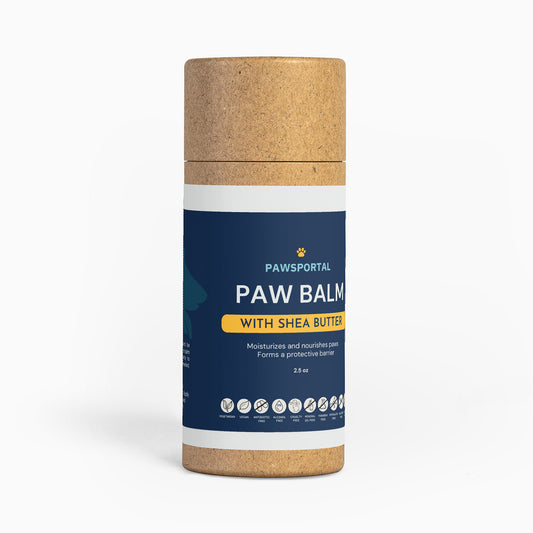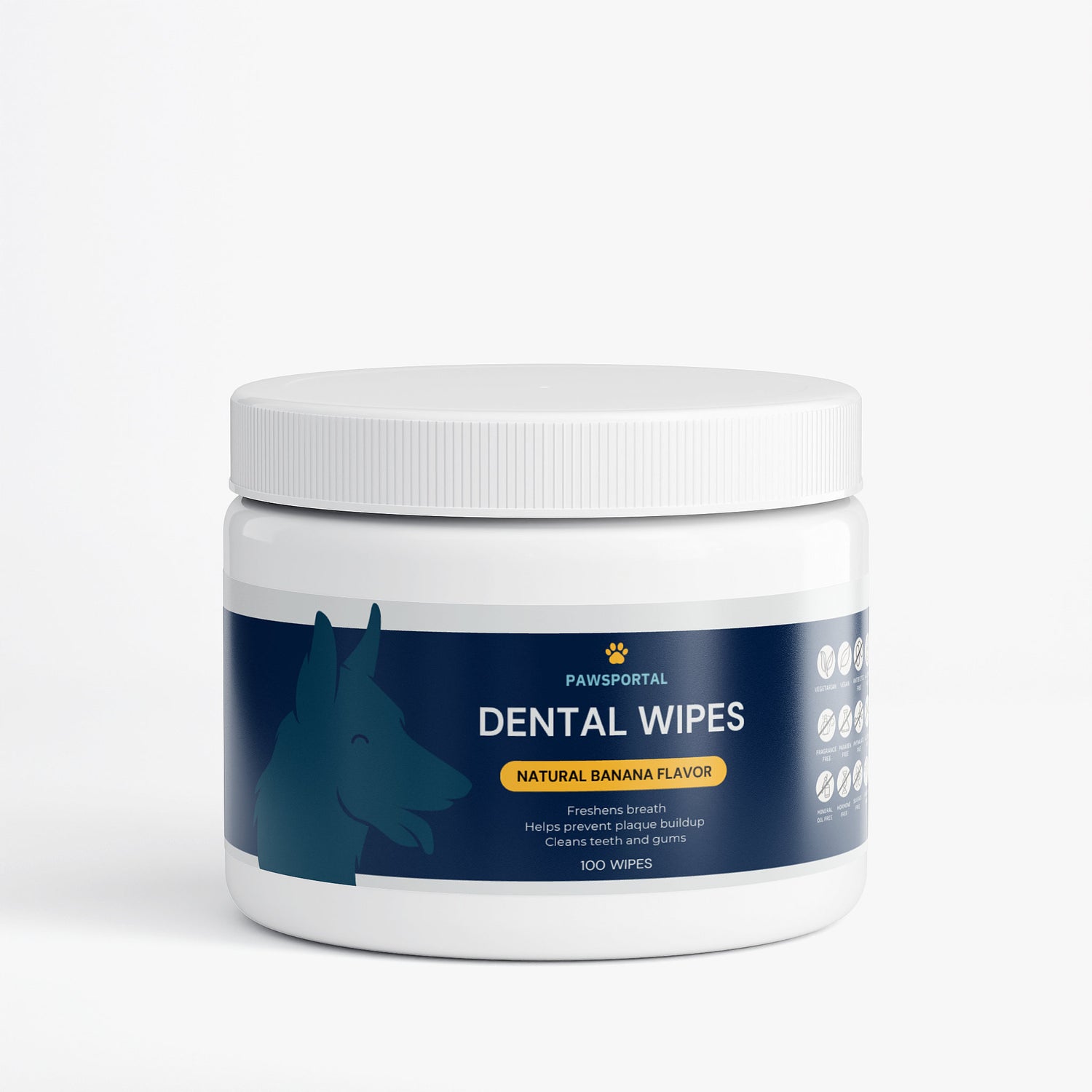
Best Dog Foods for Diabetic Dogs: A Complete Guide to Keeping Your Pup Healthy and Happy
Share
Just like us, our dogs can face health challenges, with diabetes being one of the most common. As a devoted dog owner, navigating the best dog foods for diabetic dogs can feel overwhelming. The right diet is crucial not just for managing blood sugar levels but also for keeping your pup energetic and happy. In this complete guide, we’ll explore the essential nutrients, top food brands, and tasty recipes tailored specifically for diabetic dogs. Whether you're looking to switch your dog’s food or seeking advice on their dietary needs, this guide arms you with the knowledge to make informed choices. Giving your dog the right food can lead to not just a longer life but a happier one, allowing them to enjoy their playfulness and affection-filled moments.
_____________________________________________________________________________________________

Understanding Canine Diabetes
Diabetes in dogs is a chronic condition that affects the way your dog’s body converts food into energy. Just like in humans, canine diabetes can be classified into two types: Type 1 and Type 2. Type 1 diabetes, or insulin-dependent diabetes, is the most common form found in dogs and occurs when the pancreas produces little to no insulin. Insulin is a hormone that helps glucose enter cells to be used for energy. Without adequate insulin, glucose remains in the bloodstream, leading to high blood sugar levels. This condition requires regular insulin injections to manage.
Type 2 diabetes, though less common in dogs, involves the body’s cells becoming resistant to insulin. This type can sometimes be managed through diet and lifestyle changes alone, although insulin therapy may still be required. Regardless of the type, diabetes is a serious condition that needs consistent management to prevent complications such as cataracts, kidney disease, and even life-threatening ketoacidosis.
Understanding the symptoms of diabetes is crucial for early detection and treatment. Common signs include increased thirst, frequent urination, weight loss despite an increased appetite, and lethargy. If you notice these symptoms in your dog, it's essential to seek veterinary care promptly. A vet will conduct blood and urine tests to diagnose diabetes and determine the best course of action. Early diagnosis and proper management are key to ensuring your diabetic dog lives a healthy, happy life.
_____________________________________________________________________________________________
Importance of Diet in Managing Diabetes
Diet plays a pivotal role in managing diabetes in dogs. The right food helps regulate blood glucose levels, which is vital for preventing the highs and lows that can lead to serious health issues. Consistency is crucial; feeding your dog at the same times each day helps maintain stable blood sugar levels. Moreover, the composition of the diet—specifically the balance of carbohydrates, proteins, and fats—affects how efficiently your dog’s body can utilize insulin.
One of the primary goals of a diabetic diet is to control the glycemic index, which measures how quickly a food raises blood sugar levels. Foods with a low glycemic index are digested more slowly, leading to a gradual increase in blood sugar rather than a sharp spike. This is beneficial for diabetic dogs as it helps to avoid sudden peaks and troughs in glucose levels. High-fiber foods are particularly effective in this respect, as fiber slows the absorption of sugar into the bloodstream.
In addition to managing blood sugar, the right diet can help address other health concerns common in diabetic dogs, such as weight management. Obesity can exacerbate insulin resistance, making it harder to control diabetes. A well-balanced diet that is low in simple sugars and unhealthy fats, but rich in lean proteins and complex carbohydrates, can help your dog maintain a healthy weight. By carefully selecting the right foods, you can significantly improve your dog’s quality of life and overall well-being.
_____________________________________________________________________________________________
Key Nutritional Needs for Diabetic Dogs
The nutritional needs of diabetic dogs are unique and must be carefully considered to manage their condition effectively. Proteins, fats, and carbohydrates must be balanced in a way that supports stable blood glucose levels and overall health.
Proteins are essential for maintaining muscle mass and supporting metabolic functions. High-quality, lean proteins such as chicken, turkey, fish, and lamb are excellent choices for diabetic dogs. These proteins should make up a significant portion of your dog’s diet to ensure they get the necessary amino acids for tissue repair and energy.
Fats are another critical component but must be chosen wisely. Healthy fats, like omega-3 and omega-6 fatty acids, support skin and coat health, reduce inflammation, and provide a concentrated source of energy. Fish oil, flaxseed oil, and chicken fat are good sources of these beneficial fats. However, it’s important to avoid excessive fats, especially saturated fats, as they can contribute to weight gain and complicate blood sugar management.
Carbohydrates should be primarily from complex sources that are high in fiber and have a low glycemic index. Ingredients like sweet potatoes, brown rice, barley, and oats provide sustained energy without causing rapid spikes in blood sugar. Fiber, particularly soluble fiber, is crucial as it slows the digestion and absorption of carbohydrates, leading to more stable blood glucose levels. Additionally, the inclusion of vegetables like green beans, spinach, and broccoli can provide essential vitamins and minerals while contributing to the overall fiber content of the diet.
_____________________________________________________________________________________________
Top Ingredients to Look for in Dog Food
When selecting dog food for a diabetic dog, it’s essential to scrutinize the ingredient list to ensure it meets their specific dietary needs. Look for high-quality, whole-food ingredients that are minimally processed and free from unnecessary additives.
Lean proteins should be the first ingredient listed, indicating that they are the primary component of the food. Chicken, turkey, fish, and lamb are excellent sources of protein that support muscle maintenance and metabolic health. Avoid foods that list meat by-products or generic meat meals, as these can be lower in quality and less digestible.
Complex carbohydrates with a low glycemic index are vital for managing blood sugar levels. Ingredients like sweet potatoes, brown rice, barley, and oatmeal provide steady energy and are rich in fiber. Fiber is particularly important as it aids in the slow release of glucose into the bloodstream. Vegetables such as peas, green beans, and carrots not only add fiber but also provide essential vitamins and minerals.
Healthy fats are another crucial ingredient to look for. Omega-3 and omega-6 fatty acids, found in ingredients like fish oil, flaxseed oil, and chicken fat, support skin and coat health, reduce inflammation, and provide energy. It’s important to avoid foods high in unhealthy fats, such as those containing lard or tallow, as these can contribute to obesity and complicate diabetes management.
_____________________________________________________________________________________________
Dog Food Brands Recommended for Diabetic Dogs
Several dog food brands are specially formulated to meet the needs of diabetic dogs, providing balanced nutrition that supports blood sugar management and overall health. Here are some top recommendations:
1. Hill’s Prescription Diet w/d Canine: This brand is known for its high fiber content, which helps regulate blood sugar levels and support digestive health. The food also contains lean proteins from chicken and turkey, along with a balanced mix of vitamins and minerals.
2. Royal Canin Glycobalance: Formulated specifically for diabetic dogs, this food features a blend of fibers to help control blood sugar levels. It also includes antioxidants to support overall health and immune function, alongside lean proteins and low glycemic index carbohydrates.
3. Wellness CORE Grain-Free: This brand offers high-protein, grain-free options that are suitable for diabetic dogs. The food is made with real meat, vegetables, and fruits, providing a balanced diet that supports stable blood sugar levels. The inclusion of omega fatty acids also promotes healthy skin and coat.
4. Orijen Original: Known for its high meat content and low carbohydrate levels, Orijen is an excellent choice for diabetic dogs. The food includes a variety of meats, organs, and cartilage, providing a rich source of nutrients. The inclusion of fruits and vegetables adds essential vitamins and minerals.
5. Blue Buffalo Life Protection Formula: This brand offers a balanced diet with high-quality proteins, whole grains, and vegetables. The food includes LifeSource Bits, a blend of antioxidants, vitamins, and minerals that support immune health and overall well-being. The high fiber content also aids in blood sugar management.
_____________________________________________________________________________________________

Homemade Dog Food Recipes for Diabetic Dogs
Preparing homemade meals for your diabetic dog can be a rewarding way to ensure they are getting the best nutrition tailored to their needs. Here are some simple yet nutritious recipes to get you started:
1. Chicken and Vegetable Stew:
Ingredients:
- 2 cups cooked, shredded chicken breast
- 1 cup chopped carrots
- 1 cup chopped green beans
- 1/2 cup peas
- 1/2 cup brown rice
- 4 cups low-sodium chicken broth
Instructions:
- In a large pot, combine all ingredients.
- Bring to a boil, then reduce heat and simmer for 30 minutes.
- Allow to cool before serving.
2. Turkey and Sweet Potato Mix:
Ingredients:
- 2 cups ground turkey
- 1 cup cubed sweet potatoes
- 1/2 cup chopped spinach
- 1/2 cup grated zucchini
- 1/2 cup quinoa
- 4 cups water
Instructions:
- In a large skillet, cook the ground turkey until browned.
- Add the remaining ingredients and water, bringing to a boil.
- Reduce heat and simmer for 25-30 minutes.
- Let cool before serving.
3. Fish and Veggie Delight:
Ingredients:
- 2 cups cooked, flaked fish (such as salmon or whitefish)
- 1 cup chopped broccoli
- 1/2 cup chopped carrots
- 1/2 cup chopped green beans
- 1/2 cup barley
- 4 cups water
Instructions:
- Combine all ingredients in a pot and bring to a boil.
- Reduce heat and simmer for 30 minutes.
- Cool completely before serving.
These recipes provide a balanced mix of proteins, complex carbohydrates, and vegetables that support your dog’s health and help manage their diabetes effectively.
_____________________________________________________________________________________________
Common Mistakes to Avoid When Feeding Diabetic Dogs
Managing a diabetic dog’s diet requires careful attention to avoid common mistakes that could negatively impact their health. Here are some pitfalls to watch out for:
1. Inconsistent Feeding Schedule:
Feeding your dog at irregular times can cause fluctuations in their blood sugar levels. It’s important to establish a consistent feeding schedule, with meals given at the same times each day. This helps maintain steady glucose levels and supports the effectiveness of insulin therapy.
2. Feeding High-Glycemic Foods:
Avoid foods that are high in simple sugars and have a high glycemic index, as these can cause rapid spikes in blood sugar levels. Ingredients like white rice, corn syrup, and sugary treats should be avoided. Instead, focus on complex carbohydrates and high-fiber foods that provide a slow, steady release of glucose.
3. Overfeeding or Underfeeding:
Both overfeeding and underfeeding can be detrimental to a diabetic dog. Overfeeding can lead to weight gain and increased insulin resistance, while underfeeding can cause hypoglycemia (low blood sugar). It’s important to measure portions carefully and follow your vet’s recommendations for caloric intake based on your dog’s weight and activity level.
4. Ignoring Treats and Snacks:
Treats and snacks count towards your dog’s overall daily caloric intake and can affect their blood sugar levels. Choose low-glycemic, high-fiber treats and keep track of how many you give. Healthy options include small pieces of vegetables like carrots or green beans.
5. Not Monitoring Blood Glucose Levels:
Regular monitoring of your dog’s blood glucose levels is crucial to managing their diabetes. Work with your vet to establish a monitoring routine and adjust the diet as needed based on glucose readings. This helps you identify any issues early and make necessary adjustments to their diet or insulin therapy.
_____________________________________________________________________________________________
How to Transition Your Diabetic Dog to New Food
Transitioning your diabetic dog to a new food should be done gradually to avoid digestive upset and ensure they adjust well to the new diet. Here’s a step-by-step guide to help you make the switch smoothly:
1. Consult Your Vet:
Before making any changes to your dog’s diet, consult your vet. They can provide guidance on the best food options and portion sizes based on your dog’s specific needs and health status.
2. Gradual Introduction:
Start by mixing a small amount of the new food with your dog’s current food. Gradually increase the proportion of the new food while decreasing the old food over a period of 7-10 days. This slow transition helps your dog’s digestive system adjust and reduces the risk of gastrointestinal issues.
3. Monitor for Reactions:
Keep an eye on your dog for any adverse reactions during the transition period. Watch for signs of digestive upset, such as vomiting, diarrhea, or changes in appetite. If any issues arise, consult your vet for advice.
4. Maintain Consistency:
Once the transition is complete, maintain consistency in your dog’s diet. Feed them the new food at the same times each day and avoid making frequent changes to their diet, as this can disrupt blood sugar management.
5. Regular Check-Ins:
Schedule regular check-ins with your vet to monitor your dog’s health and adjust their diet as needed. This ensures that their nutritional needs are being met and their diabetes is well-managed.
_____________________________________________________________________________________________

Monitoring Your Dog’s Health and Diet
Regular monitoring of your diabetic dog’s health and diet is essential to ensure effective management of their condition and overall well-being. Here are some key aspects to keep track of:
1. Blood Glucose Levels:
Regularly checking your dog’s blood glucose levels at home or during vet visits helps you monitor how well their diabetes is being managed. Your vet can show you how to use a glucose meter and set up a monitoring routine. Record the readings to identify patterns and make any necessary adjustments to their diet or insulin therapy.
2. Weight Management:
Maintaining a healthy weight is crucial for diabetic dogs. Regularly weigh your dog and monitor their body condition. If you notice any significant changes in weight, consult your vet to adjust their diet and caloric intake accordingly. Weight management helps improve insulin sensitivity and overall health.
3. Activity Levels:
Monitor your dog’s activity levels and ensure they are getting regular exercise. Physical activity helps regulate blood sugar levels and supports weight management. However, avoid intense exercise, as it can cause blood sugar fluctuations. Aim for moderate, consistent exercise such as daily walks or playtime.
4. Overall Health:
Keep an eye on your dog’s overall health and well-being. Watch for any changes in behavior, appetite, or energy levels, as these can indicate issues with their diabetes management. Regular vet check-ups are important for monitoring their health and addressing any concerns promptly.
5. Dietary Adjustments:
Be prepared to make dietary adjustments based on your dog’s health and glucose readings. Your dog’s nutritional needs may change over time, and regular monitoring helps you stay on top of these changes. Work closely with your vet to ensure your dog’s diet remains balanced and effective in managing their diabetes.
_____________________________________________________________________________________________
Keeping Your Diabetic Dog Happy and Healthy
Managing a diabetic dog’s diet can be challenging, but with the right knowledge and approach, you can ensure your furry friend stays healthy and happy. Understanding the importance of diet in managing diabetes, selecting the right ingredients and brands, and avoiding common mistakes are all crucial steps in this journey. Homemade recipes can provide a personalized touch, while gradual transitions and regular monitoring ensure your dog’s needs are met.
Ultimately, your devotion and attention to your dog’s health make all the difference. By providing a balanced diet, maintaining a consistent feeding schedule, and working closely with your vet, you can help your diabetic dog lead a fulfilling, energetic life. Every meal and every moment count towards their well-being, and your efforts will undoubtedly pay off in the form of a healthier, happier companion.


